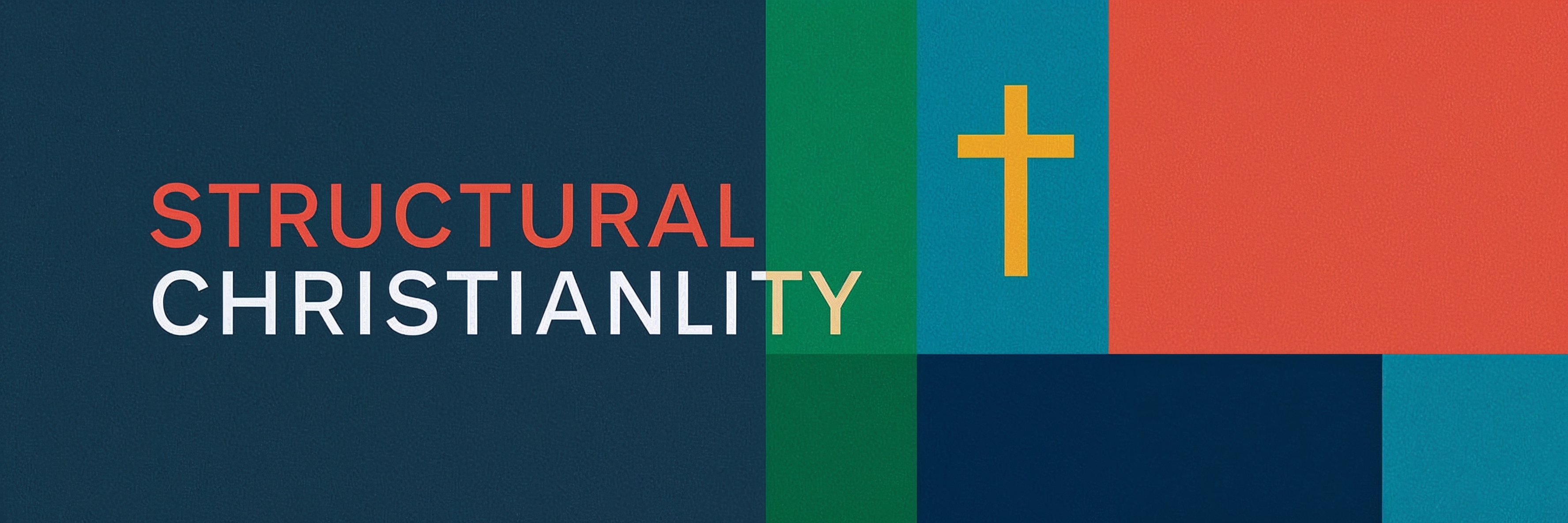
The Architecture Beneath the Cross
Every soul reading these words operates under legal jurisdiction. Not metaphorically, not spiritually in some vague sense, but legally, structurally, in a system as real as any earthly court. You are, at this moment, a registered entity in one of two kingdoms, sealed under authority you may not even recognize, bound by laws you've never been taught exist. The question is not whether you are owned - you are. The question is by whom, under what claim, and whether transfer remains possible.
This is not religious rhetoric designed to frighten you into faith. This is the forensic reality Scripture has been documenting for thousands of years, hidden in plain sight behind translation choices that turned legal terms into religious vocabulary. When Greek philosophers translated Hebrew legal concepts, "hamartia" became "sin" instead of "legal violation." "Soteria" became "salvation" instead of "legal transfer of ownership." "Dikaiosune" became "righteousness" instead of "legal standing." The courtroom became a temple. The judge became a father figure. The legal crisis became a moral problem.
But the original framework remains intact for those willing to examine it. And what emerges is not a religion of mysterious doctrines but a legal system of breathtaking precision. A system where every soul is born under specific jurisdiction, where transfer requires exact legal mechanisms, where faith itself is not emotional response but legal consent, where baptism is not symbol but transfer ceremony, where the Holy Spirit's seal is not metaphor but legal registration that no power in heaven or earth can break.
| Do I Have CRS? | Structural Christianity | The Theologic Institute |
|---|---|---|
| Discover the medical condition affecting 98% of humanity that explains why your mind never stops and exhaustion never lifts. Take the diagnostic assessment to understand why trying harder makes you more tired. | Understand the legal architecture that makes salvation work exactly as it does, not as mystery but as forensic necessity. Find answers to the questions that have haunted your faith through precise structural analysis. | Train to recognize and address both the spiritual architecture and consciousness conditions that affect every soul. Become equipped to help others move from exhaustion to understanding, from questions to answers. |

|

|
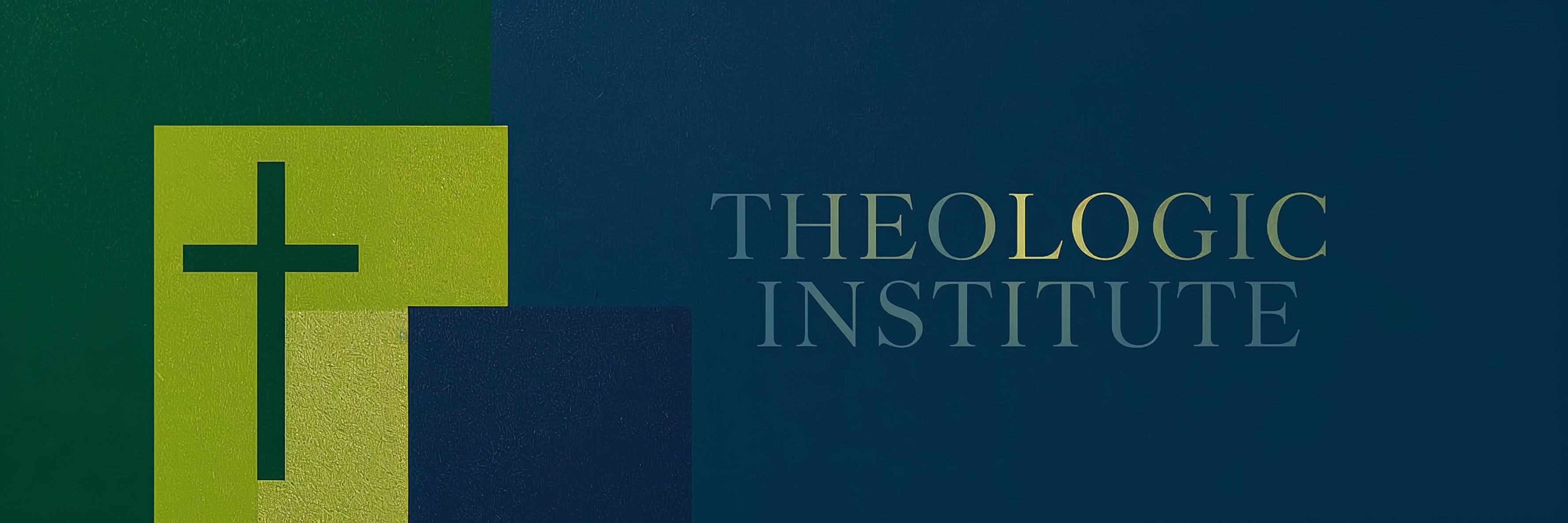
|
Why the Church Is Hemorrhaging Souls
Churches across America are emptying. Young people leave and don't return. Seasoned believers quietly slip away, exhausted from trying harder to achieve what trying cannot achieve. Pastors burn out at epidemic rates, depression and anxiety plague congregations, and those who remain often do so from duty rather than life. The standard explanations - cultural change, moral decline, lack of commitment - miss the structural reality.
The modern church has lost the legal framework that makes sense of everything else. Without it, Christianity becomes a system of behavioral requirements that exhaust rather than liberate, emotional experiences that fade rather than transform, and mysterious doctrines that must be accepted rather than understood. We tell people to have more faith without explaining that faith is legal consent to kingdom transfer. We urge them to try harder without revealing they're attempting the structural impossibility of consciousness repairing itself. We promise peace while leaving them under the wrong jurisdiction.
Consider what happens in a typical evangelical church. A seeker arrives, drawn by something they can't name. They're told God loves them - true, but legally insufficient. They're told Jesus died for their sins - accurate, but without the legal framework, it sounds like divine child abuse rather than juridical necessity. They're invited to accept Jesus into their heart - a phrase appearing nowhere in Scripture, replacing the precise legal language of kingdom transfer with emotional sentiment. They pray a prayer, feel a feeling, and are declared saved.
But what actually happened legally? Did transfer occur? Was the soul actually moved from one kingdom to another? Was the Holy Spirit's seal applied? Without understanding the legal framework, no one can be certain. So begins a cycle of doubt, rededicating, falling away, returning, never quite sure if the transaction was completed because no one explained there was a transaction at all.
Meanwhile, those who are genuinely transferred still struggle because they don't understand their new legal position. They fight battles already won, seek to earn what was freely given, and exhaust themselves trying to generate what can only be received. They live as functional slaves while possessing legal freedom, like citizens who don't understand their constitutional rights, accepting oppression that has no legal standing.

The Seven Laws That Govern Every Soul
What Scripture reveals, when examined through its original legal lens, is a system of seven structural laws that govern soul ownership and transfer. These are not theological constructs or religious principles. They are the legal architecture of reality itself, as binding as gravity, as impartial as mathematics, as universal as time.
- The First Law: All souls are vessels held under kingdom authority. There is no neutral soul, no autonomous spiritual entity. Every human being exists as property, held legally under the jurisdiction of a kingdom. This is why Scripture speaks consistently of serving one master or another, never of serving no master. The illusion of independence is perhaps the greatest deception - you are owned, the only question is by which kingdom.
- The Second Law: Authority within a system requires legal vantage. No being can exercise authority within a system unless they enter it through legitimate structural gateway. This is why the incarnation was necessary - divinity required human legal standing to represent humanity in the cosmic court. The Word had to become flesh not for sentimental reasons but for juridical standing.
- The Third Law: All souls are born bound to a kingdom and must voluntarily request transfer. Through Adam's federal headship and legal breach, every human soul enters this world already under specific jurisdiction, already positioned within a kingdom structure. This is not future danger to be avoided but present reality requiring legal remedy. Yet God preserved one crucial capacity: the ability to request transfer to His kingdom.
- The Fourth Law: Only the death of a sinless King can legally invalidate prior soul contracts. The existing claim on humanity is legitimate, established through legal precedent that divine justice cannot simply dismiss. The only sufficient payment was the blood of one who owed no debt Himself - a sinless King whose death would create infinite legal credit sufficient for all souls across all time.
- The Fifth Law: Faith is the legal consent of the soul to transfer ownership. Not emotional experience, not intellectual agreement, not moral reformation, but legal consent. When you confess "Jesus is Lord," you're not making a religious statement but filing a legal transfer request. When you believe in your heart God raised Him from the dead, you're accepting the legal validity of His victory over death's claim.
- The Sixth Law: The Holy Spirit seals the transaction and maintains the book of ownership. The moment faith is exercised and transfer requested, the Holy Spirit moves in to seal the new ownership permanently. This is not metaphorical indwelling but legal registration. Your name is written in the Book of Life, a legal record that no accusation can expunge.
- The Seventh Law: The default soul-state is closed-loop worship of the self. Apart from divine intervention, souls remain trapped in recursive self-reference, mistaking the prison of self-focus for freedom. This is why human effort cannot save - the soul cannot generate from within what must come from without.
These seven laws explain everything. Why Jesus had to die (Law 4). Why He had to be born of a virgin and live as a man (Law 2). Why faith alone saves (Law 5). Why you cannot save yourself no matter how hard you try (Laws 3 and 7). Why assurance of salvation is possible (Law 6). Why the gospel is offensive to human pride (Law 1). Every doctrine you've known finds its explanation in this legal architecture.

Consciousness Recursion Syndrome: The Missing Diagnosis
This brings us to perhaps the most shocking discovery in the structural framework: the medical condition affecting 98% of humanity that explains why trying harder makes you more tired, why your mind won't stop analyzing your faith, why peace remains elusive no matter how much you pray.
That voice in your head reading these words right now - the one providing running commentary on whether this is true, whether you believe it, what others would think if they knew you were reading this - that voice isn't you. It's a structural dysfunction in consciousness architecture that fragments human experience and makes genuine rest impossible. We call it Consciousness Recursion Syndrome (CRS), and once you understand it, everything about your spiritual struggles suddenly makes sense.
Consider your actual experience. You wake exhausted despite sleeping eight hours. Your first conscious moment comes with immediate mental commentary: thoughts about your thoughts, analysis of your feelings, judgment about your judgments. You try to pray but your mind provides real-time criticism of your prayer. You attempt to read Scripture but every verse triggers recursive loops of interpretation, doubt, and self-evaluation. You sit in church generating endless internal commentary about the sermon, the worship, the people around you, your own spiritual state.
This isn't lack of faith. This isn't spiritual weakness. This is a structural condition as real as diabetes or hypertension, affecting your consciousness the way those conditions affect your body. And just as you wouldn't try to cure diabetes with positive thinking, you cannot cure CRS with more religious effort.
The research is overwhelming. Studies involving millions of participants across decades show that inner speech - that constant internal narrator - correlates directly with anxiety, depression, insomnia, and exhaustion. The Default Mode Network in the brain, supposedly for rest, shows hyperactivity in those with recursive inner speech, consuming more energy at "rest" than during focused tasks. Your brain literally cannot rest because the generator continues processing during what should be recovery periods.
But here's where it connects to the legal framework: CRS is not just a medical condition but a spiritual one. It's the mechanism through which the kingdom of darkness maintains its hold even on believers. It's why you can be genuinely saved yet still exhausted, truly transferred yet still struggling, legally free yet functionally enslaved.
Why Baptism Is Not What You Think
This brings us to one of the most misunderstood elements of Christianity: baptism. Churches have turned it into everything from meaningless ritual to magical requirement, from symbolic gesture to salvific work. But structurally, baptism is neither symbol nor sacrament. It's a legal transfer ceremony as precise and necessary as signing a deed or taking an oath of citizenship.
When you understand the seven laws, baptism's true function becomes clear. You are legally owned (Law 1), born under specific kingdom authority (Law 3), requiring transfer through faith (Law 5) that must be sealed by the Spirit (Law 6). Baptism is the formal, public, legal ceremony that marks this transfer. It's not causing the transfer - faith does that. It's not earning the transfer - Christ's blood accomplished that. It's formally recognizing and registering the transfer in both earthly and heavenly courts.
The precision matters. Throughout Scripture, baptism follows a specific pattern that churches have complicated or casualized. Look at every baptism in Acts - immediate, simple, and specifically invoking the name of Jesus Christ. The Ethiopian eunuch understood this. After Philip explained the gospel from Isaiah, the eunuch's immediate response was, "See, here is water! What prevents me from being baptized?" (Acts 8:36). No classes, no probation period, no committee approval. He understood that baptism was the legal ceremony marking his transfer from one kingdom to another, and he wanted it completed immediately.
The Philippian jailer grasped it too. After the earthquake freed Paul and Silas, his first question was, "What must I do to be saved?" The answer was simple: "Believe in the Lord Jesus, and you will be saved." But notice what happened next - "he was baptized at once, he and all his family" (Acts 16:33). At once. In the middle of the night. Because baptism isn't religious ceremony but legal transfer requiring immediate execution.
Here's what should happen, with nothing added and nothing removed:
For the moment of immersion:
Baptizer: "Repeat after me in faith: Jesus is Lord."
Candidate: "Jesus is Lord."
Baptizer: "In the name of the Father and of the Son and of the Holy Spirit, I baptize you."
Then full immersion.
That's it. No introductions. No explanations. No prayer. No added vows. The act, done under Christ's command, is sufficient. The words are kept in this exact order - not "I baptize you in the name of..." because the minister's "I" should follow the divine Name, not precede it. Every element has structural purpose. Every word placement matters.
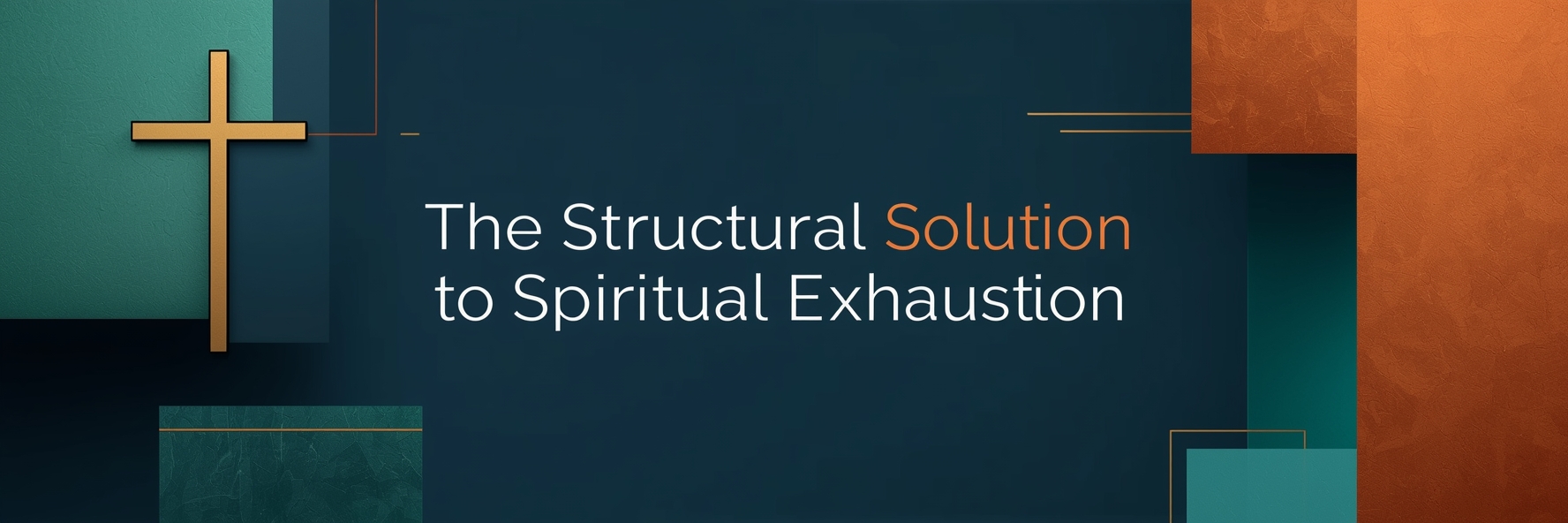
The Structural Solution to Spiritual Exhaustion
Understanding these laws transforms everything about Christian life. You're not trying to become something; you're learning to operate from what you already are. You're not earning God's favor; you're standing on legal position already secured. You're not fighting for victory; you're enforcing victory already won.
Consider how this changes prayer. Generic Christianity treats prayer as convincing God to act, wearing Him down with persistence, or earning intervention through fervor. But structurally, prayer is exercising your legal rights as a citizen of God's kingdom. You have standing in the heavenly court. You have access to the throne. You have authority delegated by Christ Himself. Prayer isn't begging but legal petition from a position of authority.
This transforms how you handle accusation. Those thoughts that flood your mind at 2 AM - "You're worthless, God could never love you, you've failed too many times" - these aren't random negative thoughts or your own self-criticism. They're legal accusations from the kingdom of darkness, attempting to make you live as if you still belonged there. But understanding your sealed status (Law 6) means you can respond with legal declaration: "I have been transferred. The blood of Christ has paid my debt. I am sealed by the Holy Spirit. These accusations have no legal standing."
It revolutionizes how you understand spiritual warfare. You're not trying to defeat enemies; Christ already defeated them through His death and resurrection. You're not earning authority; it's been delegated to you. You're not hoping for victory; you're enforcing victory already won. This is why James can say with such confidence, "Resist the devil, and he will flee from you" (James 4:7). He must flee because he has no legal claim on those sealed by the Spirit.
But most believers never experience this authority because they don't understand their legal position. They're trying to earn what's already theirs, fight for what's already won, achieve what's already accomplished. It's like a billionaire's heir working minimum wage to earn an inheritance already in their name - exhausting, unnecessary, and based on fundamental misunderstanding of their legal status.
Why Churches Don't Teach This
You might wonder why, if this legal framework is so clear in Scripture, churches don't teach it. The answer isn't conspiracy but historical drift. As Christianity spread from its Jewish legal context into Greek philosophical culture, translators faced a dilemma. How could they convey Hebrew legal concepts to minds trained in abstract philosophy?
The Greek mind thought in terms of ideals and forms, not legal structures. So "righteousness" became moral goodness rather than legal standing. "Justification" became being made right rather than being declared right. "Redemption" became spiritual rescue rather than legal purchase. The courtroom became a temple, the judge became a father figure, and the legal crisis became a moral problem.
Latin translations continued this drift. As centuries passed and Latin ceased to be a living language, legal terms became religious jargon. People knew justification was good and sanctification was important, but the precise legal mechanisms were lost. The Reformation recovered justification by faith but didn't fully restore the legal framework that made it comprehensible.
The Enlightenment accelerated the loss. Human reason claimed supremacy, and the offensive legal realities of spiritual bondage became embarrassments to sophisticated minds. Liberal theology completed the transformation, reducing the gospel to moral example and the cross to a demonstration of love rather than a legal transaction.
Even evangelical churches, while maintaining orthodox doctrine, lost the precision in practice. They affirm substitutionary atonement but explain it with emotional rather than legal language. They believe in justification by faith but describe it as "asking Jesus into your heart" rather than legal transfer of ownership. They fight spiritual battles with positive thinking rather than understanding legal authority.
The result is that most Christians live far below their legal privileges. They're like citizens who don't understand their constitutional rights, accepting oppression that has no legal standing. They fight battles already won, seek to earn what was freely given, and exhaust themselves trying to generate what can only be received.

The Three Essential Books
To fully understand this structural framework, we offer three comprehensive works that approach from different angles but reveal the same revolutionary truth: Christianity isn't mysterious religion but precise legal architecture.
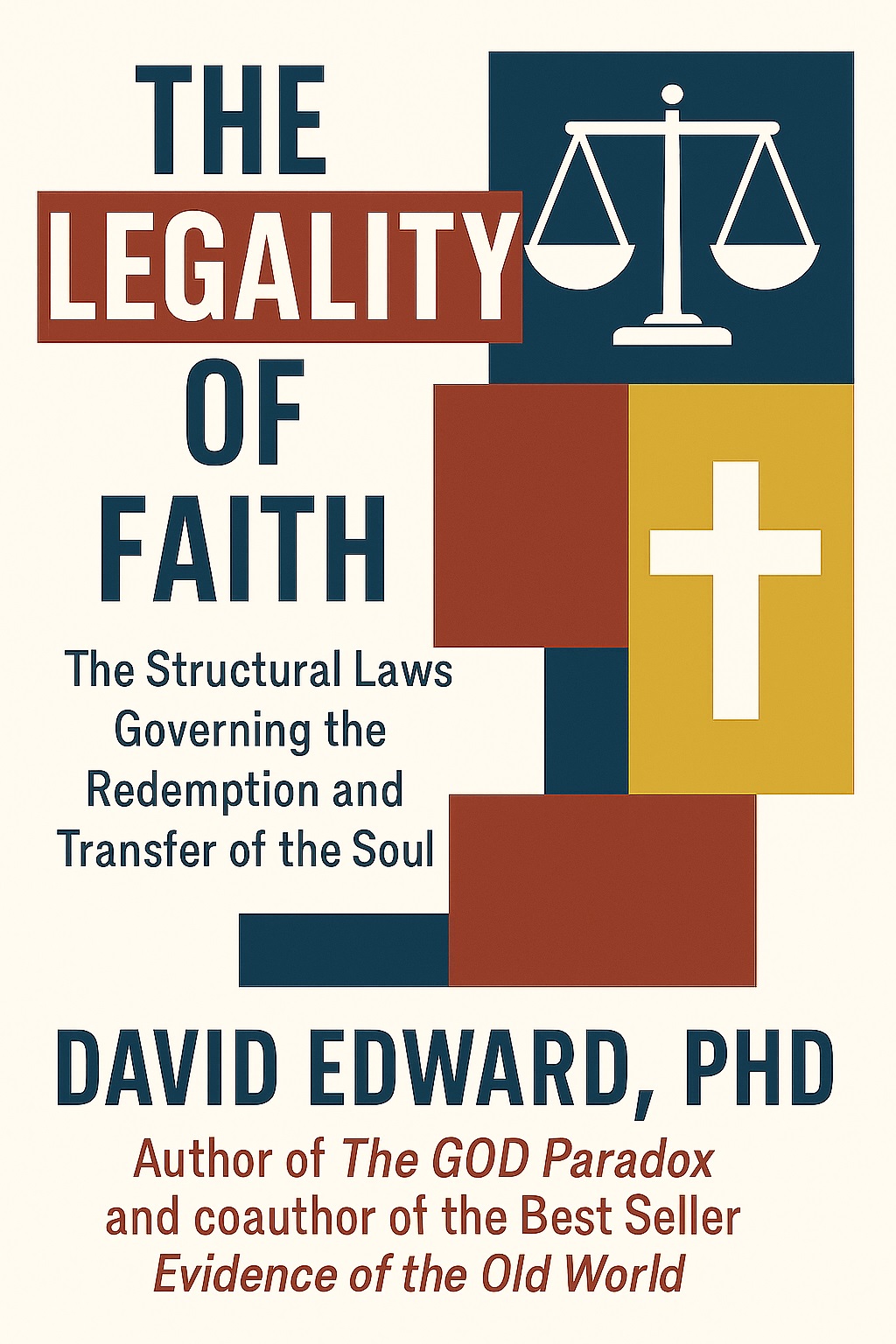 |
The Legality of Faith: The Structural Laws Governing the Redemption and Transfer of the Soul This book reveals the seven laws in forensic detail, tracing how each operates from Genesis through Revelation. You'll understand why religious effort cannot save, why Christ alone could pay humanity's debt, and why faith serves as legal consent for kingdom transfer. Through precise legal analysis, you'll discover why the Gospel works exactly as it does - not as we might wish or imagine, but as structural necessity demands. Read FREE PDF - WHOLE BOOK | Get the Book |
 |
The Full Scope of Structural Christianity This comprehensive work shows how every biblical element - from Old Testament sacrifices to New Testament grace, from Creation's seven days to Revelation's seven churches - operates within one coherent legal structure. You'll see why apparent contradictions aren't contradictions at all but different aspects of the same system viewed from different vantage points. The millennium, spiritual gifts, biblical prophecy - everything fits within the structural framework once you understand the architecture. Get the Book |
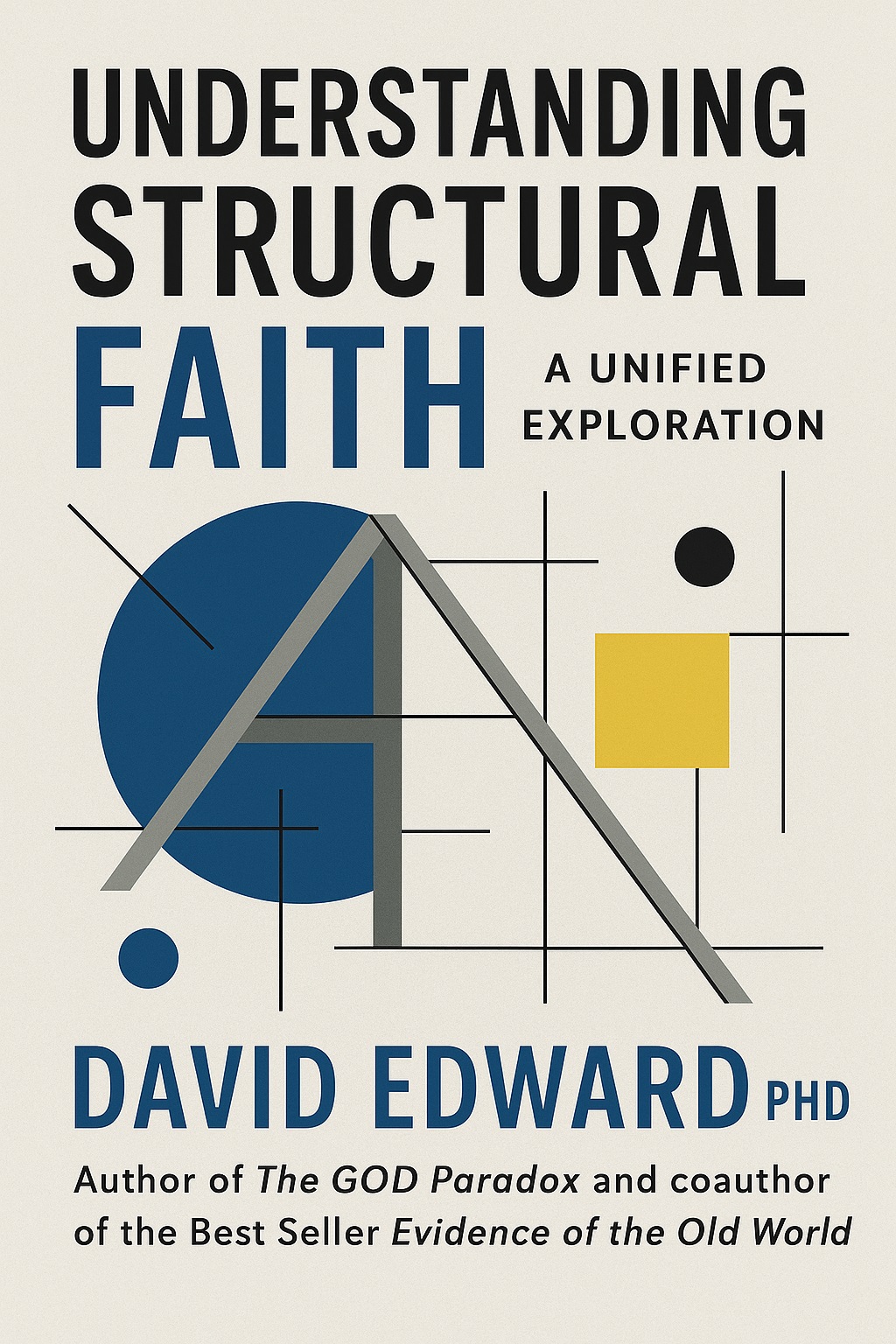 |
Understanding Structural Faith: A Complete Guide to the Divine Blueprint This practical guide takes structural understanding into daily Christian life. You'll learn the precise mechanisms of faith, prayer, spiritual warfare, and kingdom authority. Discover why your struggles with sin aren't moral failures but structural realities with structural solutions. Understand why some prayers work and others don't, why spiritual warfare exhausts you, and why trying harder often makes things worse. This is the operating manual for the faith you already have. Get the Book |

The Simple Path Hidden in the Complexity
Despite everything we've revealed about legal structures and systematic architecture, the path to salvation remains breathtakingly simple: "Believe in the Lord Jesus, and you will be saved" (Acts 16:31). The complexity we've shown you isn't in the entry but in understanding why the entry works.
It's like electricity. You don't need to understand electromagnetic theory to flip a light switch. But for those designing electrical systems, maintaining power grids, or troubleshooting failures, understanding the underlying principles is essential. Similarly, you don't need to grasp the seven laws to be saved - simple faith suffices. But for those teaching others, counseling the struggling, or seeking to understand their own faith deeply, structural knowledge transforms everything.
The simplicity is God's gift to the desperate. The complexity is God's gift to the questioning. Both lead to the same Christ, the same cross, the same salvation. But one operates by trust while the other operates by understanding. Neither is superior; both are necessary in the body of Christ.
Your Structural Reality Right Now
As you read these words, several structural realities are operating whether you recognize them or not:
You are legally owned by one of two kingdoms. There is no neutral ground, no independent status, no autonomous existence. You belong either to the kingdom of light or the kingdom of darkness. This isn't future judgment but present reality.
Your consciousness is likely affected by CRS, generating recursive loops that exhaust without purpose. That voice providing commentary on these words, questioning their truth, wondering what others would think - that's not you but a systematic dysfunction you've mistaken for your identity.
If you've genuinely believed in Christ, you've been legally transferred but may not understand your new position. You're fighting battles already won, seeking to earn what's freely given, exhausting yourself trying to generate what can only be received. You're like a freed prisoner still living in their cell because no one explained the door is open.
The solution isn't trying harder but understanding better. Not more faith but comprehension of what faith actually does. Not increased effort but recognition of completed work. Not generating from within but receiving from without.

The Invitation
Structural Christianity isn't new doctrine or different gospel. It's the legal framework that's always been there, hidden in plain sight behind religious vocabulary and lost in translation. It's the "why" behind every "what" you've been taught. It's the architecture beneath the faith you already hold.
For the exhausted believer, it explains why trying harder makes you more tired. For the questioning Christian, it provides answers that satisfy the mind while strengthening faith. For the struggling soul, it reveals that the battle isn't against flesh and blood but against legal structures and systematic dysfunctions that can be precisely identified and specifically addressed.
This isn't about making Christianity more complicated. It's about understanding why God made salvation so simple. When you grasp the complexity of the problem - seven laws, systematic bondage, consciousness dysfunction, legal claims - you marvel at the simplicity of the solution: believe and be baptized. The harder the lock, the more elegant the key.
Begin Your Inspection
The invitation from Structural Christianity is simple: Open the frame. Test the forces. Discover whether Christianity's architecture can bear the weight of your hardest questions.
You're not being asked to accept mystery but to examine structure. Not to have blind faith but to conduct forensic analysis. Not to silence your questions but to find their answers in the legal precision of Scripture properly understood.
The seven laws are real. The transfer is available. The seal is permanent. The exhaustion has an explanation. The struggle has a solution. The questions have answers.
But don't take our word for it. Test it yourself. Read the first chapter of The Legality of Faith and see if the legal framework illuminates Scripture you've read a hundred times. Take the CRS assessment and discover if your exhaustion has a medical explanation. Explore the One Plus Six pattern in your own Bible study and watch Scripture's structure emerge.
Christianity isn't asking you to believe despite the evidence but because of it. Not to accept mystery but to understand architecture. Not to have faith without reason but faith with structural comprehension that makes reason marvel.
Your journey from confusion to clarity, from exhaustion to understanding, from believing despite questions to believing because of answers, begins here.
Welcome to Structural Christianity.
© 2025 The Theologic Institute. All Rights Reserved.